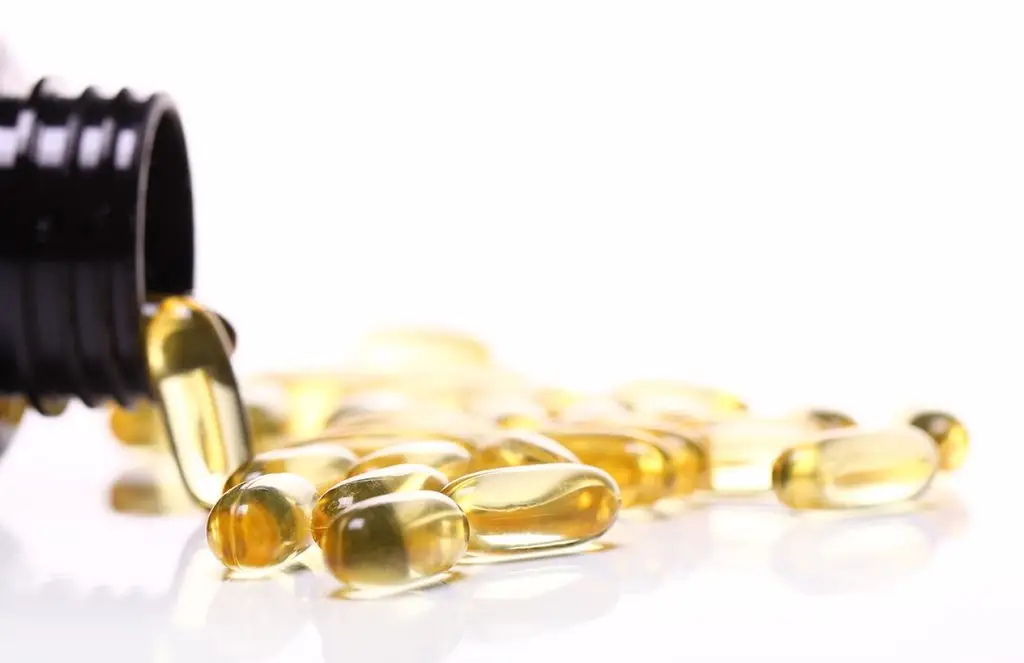
Omega fatty acids have become a buzzword in nutrition circles, and for good reason. These essential fats play crucial roles in our bodies, from supporting heart and brain health to reducing inflammation. I’ve seen how incorporating the right balance of omega fatty acids can transform someone’s health. However, with the growing popularity of omega supplements and fortified foods, consumers often find themselves confused by product labels.
Accurate labeling of omega fatty acids on food products is not just a matter of regulatory compliance – it’s a vital tool for informed decision-making. Someone may think they are getting adequate omega fatty acids from their diet but due to unclear labeling, they are actually consuming ineffective forms of the nutrient.
It is important to make sure that when you are labeling omega fatty acids, you follow the regulatory requirements but also consider the practical implications for consumers and manufacturers alike.
Understanding Omega Fatty Acids
There are three main types of omega fatty acids. Each one has unique characteristics and plays a crucial role in our health.
The three types of omega acids are:
- Omega-3s: These are polyunsaturated fatty acids with their first double bond at the third carbon atom from the methyl end of the molecule. Omega 3 fatty acids are vital for brain function and heart health. The key types are ALA (alpha-linolenic acid), EPA (eicosapentaenoic acid), and DHA (docosahexaenoic acid). They can be found in fatty fish, flaxseeds, and walnuts.
- Omega-6s: These are polyunsaturated fatty acids with their first double bond at the sixth carbon atom from the methyl end. These fatty acids support growth and development. The key types are linoleic acid (LA) and arachidonic acid (AA). Common sources of this fatty acid include vegetable oils and nuts.
- Omega-9s: These are monounsaturated fatty acids with their double bond at the ninth carbon atom from the methyl end. Health benefits of omega-9’s include inflammation and improving insulin sensitivity. Olive oil and avocados are rich sources of this fatty acid.
The balance between these essential fatty acids is key. Most Western diets are high in omega-6 and low in omega-3, which can promote inflammation. Many health practitioners often recommend increasing omega-3 intake through diet or supplements.
Interestingly, not all omega-3s are equally beneficial. Plant-based ALA omega-3 fatty acids don’t provide the same direct benefits as marine-derived EPA and DHA omega-3 fatty acids like those found in oily fish. This is a nuance often overlooked in product labeling, and understanding these distinctions is crucial for making informed dietary choices and interpreting product labels accurately.

Regulatory Requirements for Omega Fatty Acid Labeling
Global regulations for omega fatty acid labeling vary, but all aim to ensure accurate information for consumers. Here’s a brief overview:
- Omega-3 fatty acids can be declared on the Nutrition Facts label
- Claims like “high in” or “good source of” omega-3s are allowed if certain conditions are met
- Qualified health claims for EPA and DHA omega-3s are permitted with specific wording
- Mandatory declaration of alpha-linolenic acid (ALA) content if a claim is made
- Specific conditions for claims about omega-3 content or health benefits
- Stricter requirements for infant formula and medical foods
Other International Standards:
- Codex Alimentarius provides global guidelines, often adopted by countries without specific regulations
- Many countries have their own standards, often similar to FDA or EU regulations
Allowable declarations and claims typically include:
- Quantitative statements of omega-3 content
- “Source of” or “High in” omega-3 claims, based on specific thresholds
- Certain health claims, usually requiring scientific substantiation
Compliance is crucial to:
- Avoid regulatory penalties and product recalls
- Maintain consumer trust and brand reputation
- Ensure fair competition in the marketplace
For many food manufacturers, dieticians and consultants, even minor labeling errors can lead to significant consequences for their food products or recipes. It’s important to follow the rules, to ensure that you are providing consumers with the information they need to make informed choices about their health. Maintaining accurate labeling helps build the reliability of your product with regulators as well as with the consumer.
Permissible Omega Fatty Acid Statements
When you are labeling your product for omega fatty acids, there are a few statements that you can make so that your labeling is truthful and does not mislead the consumer. Permissible statements include:
- Quantitative declarations:
- “Contains X mg of omega-3 fatty acids per serving” or “X% of Daily Value for ALA omega-3 fatty acids”
- Nutrient content claims (if meeting specific thresholds):
- “Good source of omega-3s”, “High in omega-3 fatty acids” or “Excellent source of EPA and DHA omega-3s”
- Qualified health claims (with FDA-approved language):
- “Supportive but not conclusive research shows that consumption of EPA and DHA omega-3 fatty acids may reduce the risk of coronary heart disease.”
- Structure/function claims:
- “Omega-3 fatty acids support heart health” or “DHA contributes to brain function”
- Comparative claims (if substantiated):
- “Contains 25% more omega-3s than our previous formula”

Impermissible Omega Fatty Acid Statements
Impermissible statements when labeling your products are statements which exclude measurable quantities that have scientific evidence or go against regulatory guidelines. For example:
- Unqualified health claims like “Omega-3s prevent heart disease”
- Potentially misleading or false statements such as “Highest omega-3 content of any food”
- Therapeutic claims like “Cures depression” or “Treats ADHD”
- Misrepresentation of omega-3 sources such as claiming “fish oil omega-3s”
- Misrepresentation of omega-3 sources like claiming “fish oil omega-3s” for a plant-based product
- Vague or meaningless claims such as “Natural omega balance”
- Unauthorized nutrient content claims, for example: “Low in omega-6”
- Conflating different types of omega fatty acids. An example would be stating “Rich in omega-3s” if the product is only high in omega-9.
See How FoodLabelMaker Can Help You
Best Practices for Accurate Omega Fatty Acid Labeling
When you are labeling for omega fatty acids you should follow these key principles:
Precision in measurement and analysis:
- Use validated analytical methods for fatty acid quantification
- Account for natural variations by testing multiple batches
- Express content in grams per serving, rounded to the nearest 0.1g
Clear and specific terminology:
- Use full names alongside abbreviations (e.g., “Eicosapentaenoic Acid (EPA)”)
- Differentiate between omega-3 types
- Specify the source
Quantitative declarations:
- State amount per serving
- Include percentage of Daily Value if relevant
- List multiple omega types individually
Provide contextual Information:
- Include serving size in familiar units
- Provide recommended daily intake if making nutrient content claims
Transparency about sourcing:
- Clearly state if synthetic or natural sources are used
- For fish oil, specify fish species if known
Third-party testing and certification:
- Engage reputable labs for regular product testing
- Consider certifications from organizations like GOED or NSF International
Regular label reviews:
- Update labels to reflect changes in formulation or regulations
- Conduct annual compliance checks
Remember, transparency builds trust. Consumers appreciate detailed and honest labeling. Accurate labeling helps consumers make informed choices about their omega fatty acid intake which may affect their health.
Leveraging Software for Omega Fatty Acid Labeling
A benefit of the modern world is that effective nutrition labeling software exists that can improve the accuracy and efficiency of labeling omega fatty acids. Labeling software allows you to do the following:
- Provide nutrition breakdown reports
- Access to customizable options where you can create market-specific labels (FDA, EU)
- Use automated compliance checks where you can build in rules for claims and regulations
Using Food Label Maker’s labeling software can help with consistency, time-saving, reduced errors and easy updates. The software automates complex calculations, ensuring accurate representation of omega-3, omega-6, and omega-9 content across various products. Combine regulatory expertise with our software to ensure your labels are accurate and compliant, allowing you to focus more on product development and marketing. This approach not only streamlines your labeling process but also minimizes the risk of costly recalls or legal issues due to mislabeling.
A step-by-step guide to using our software:
- Input recipe ingredients
- Select the applicable market and label format
- Review auto-generated panel
- Customize omega fatty acid display
- Run compliance check
- Generate final label
Browse their video tutorials for visual references on how to complete these steps.
Common Challenges and Solutions in Omega Fatty Acid Labeling
Inconsistent measurements due to natural product variability
Omega fatty acid content in natural sources can vary significantly due to factors like diet, season, and processing methods. For example, the omega-3 content in fish can change based on their feed and water temperature. This variability makes it challenging to provide consistent labeling across batches, potentially leading to discrepancies between the label and the actual product content. To combat this potential challenge make sure that you implement robust quality control with regular and standardized testing.
Evolving regulatory standards across regions
Regulatory requirements for omega fatty acid labeling can change over time and may differ in different regions. These differences can complicate labeling for products sold in multiple markets and require constant vigilance to ensure compliance.
To navigate this, consistently monitor regulatory changes. Pay attention to changes from the authorities like the FDA, EFSA and Codex Alimentarius. Additionally, regularly review and update your labeling practices to reflect the latest regulations in all markets where your products are sold.
Consumer confusion about omega types and serving sizes
Understanding the differences between the various omega fatty acids and their health benefits can be confusing for consumers. Serving sizes can also be confusing, especially when they differ from typical consumption amounts.
To help the consumer utilize specialized labeling software to streamline the process of creating and updating labels. Tools like Food Label Maker can help ensure consistency across products and automate compliance checks to help identify any potential labeling issues.
Additionally, when making claims make sure that they are supported by scientific evidence and approved by regulatory bodies. Avoid ambiguous or exaggerated claims. Consider using qualifying language where necessary, such as “may support” or “contributes to”. Regularly review your claims to stay up-to-date with scientific research and regulatory guidance.

Conclusion
When labeling omega fatty acids, provide clear and accurate information to help customers make informed choices. Check global regulatory standards while using clear and specific terminology. Best practices include using validated analytical methods, providing quantitative declarations, and regularly reviewing labels. Leveraging labeling software like that offered by Food Label Maker can improve accuracy, efficiency, and compliance. Ensuring accurate labeling builds credibility with consumers and regulatory bodies while supporting overall public health.
FAQs:
How to name fatty acids using omega?
Omega naming is based on the position of the first double bond from the methyl end of the molecule. Count the carbons from the methyl end until you reach the first double bond.
How do you write omega-3 fatty acids?
Omega-3 fatty acids are typically written as “omega-3” or “ω-3” in scientific literature. In less formal contexts, “n-3” is also used. For specific fatty acids, use their abbreviated names (e.g., “EPA (omega-3)”).
How to read omega-3 labels?
Look for:
- Total amount of omega-3s per serving
- Specific types (ALA, EPA, DHA) and their amounts
- Serving size
- % Daily Value if provided
- Source (fish oil, algae, plant-based)
How do you tell if a fatty acid is omega-3 or 6?
The distinction lies in the molecular structure:
- Omega-3: First double bond at the 3rd carbon from the methyl end
- Omega-6: First double bond at the 6th carbon from the methyl end
Common omega-3s: ALA, EPA, DHA Common omega-6s: Linoleic acid, Arachidonic acid
For practical purposes, recognize common food sources:
- Omega-3 rich foods: fatty fish, flaxseeds, chia seeds
- Omega-6 rich foods: most vegetable oils, nuts, seeds



